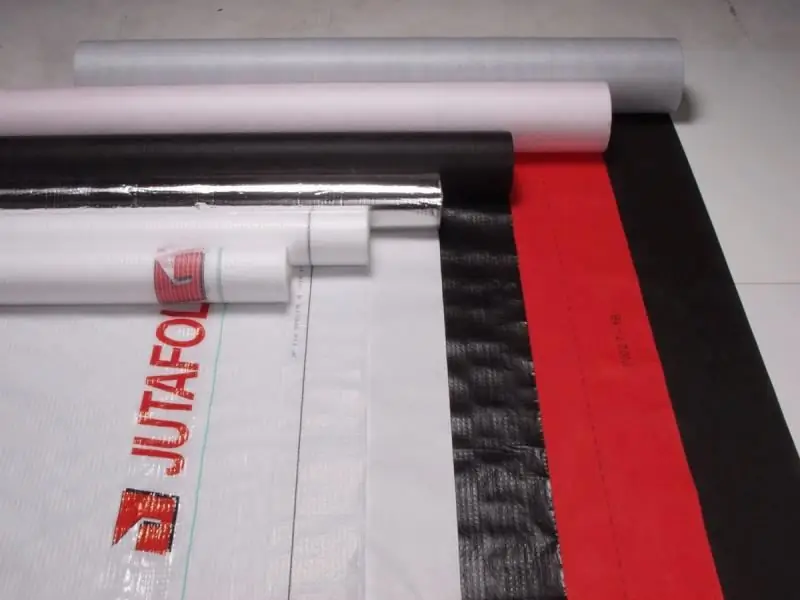
Table of contents:
- Author Bailey Albertson [email protected].
- Public 2023-12-17 12:53.
- Last modified 2025-01-23 12:41.
Dry and compressed yeast: which is better and the ratio table

Yeast is a living organism belonging to unicellular fungi that feed on sugars. Even their scientific name - Saccharomyces cerevisiae, in simple language is translated as "a mushroom that eats sugar." As a result of this process, carbon dioxide is released, which gives the baked goods splendor, forming air pockets, and ethyl alcohol. However, yeast comes in different types, and when baking, this must be taken into account in order to properly observe the proportions and cooking technology.
Differences between different types of yeast
The yeast we use for baking comes in three types:
-
pressed. This product is sold in the form of small (usually no more than 100 g) briquettes of light beige color. At the fault, such yeast crumbles, and to use it, it must be "run" in a liquid medium. The shelf life of compressed yeast is rather short - only 2 weeks if stored in a refrigerator;

Compressed yeast In order for the compressed yeast to fully manifest its unique properties, you need to use it fresh as quickly as possible.
-
active dry. They are similar to beads for decorating, as they are produced in the form of granules. They also need to be "started", but they are stored a little longer - about 1 month in an opened package on the top shelf of the refrigerator;

Dry active yeast Dried yeast granules are protected from attack by a natural protective layer of dead yeast cells that forms during the drying process
-
instant (fast-acting). This type of yeast does not need to be mixed with liquid foods before being added to the dough. They can be mixed with flour without first activating. However, after opening the package, instant yeast will be fresh for only two days, after which it will lose its properties. In the refrigerator, their shelf life is increased to two weeks, but only if they are tight.

Instant Fast Acting Yeast Fast acting active yeast is the next generation of dry yeast and is also well suited for baking in a bread machine
Which yeast is best for baking, housewives choose individually. However, experts say that dry active yeast has a reduced ability to ferment, but instant yeast is useful for working with butter dough, which contains a large amount of oil.
Different types of yeast are quite interchangeable. The main thing is to know the exact ratio and observe the proportions when baking.
Table: ratio of pressed and dry yeast
| Compressed yeast (in g) | nine | 13 | 18 | 22 | 25 | 31 | 36 |
| Active dry yeast (in tsp) | one | 1 ½ | 2 | 2 ½ | 3 | 3 ½ | 4 |
| Dry active yeast (in g) | 3 | 4.5 | 6 | 7.5 | nine | 10.5 | 12 |
| Instant yeast (tsp) | ¾ | one | 1 ½ | 2 | 2 ¼ | 2 ½ | 3 |
| Instant yeast (in g) | 4.5 | 6 | nine | 12 | 13.5 | fifteen | 18 |
Life hack: if you do not have a scale, then in order to measure 9 g of pressed yeast, cut a cube from a briquette, in which all sides are 210 mm (or 2.1 cm)
Knowing the ratio of the amount of different types of yeast in grams and teaspoons, you can easily choose an equivalent value and observe the proportions recommended in the recipe. Be sure to pay attention to the shelf life of the product, because the taste and appearance of the baked goods depend on it.
Recommended:
Trimmer For Nose, Ears And Eyebrows: Which One Is Better To Choose, How To Use + Video

Trimmer for nose, ears and eyebrows, its purpose, device and principle of operation. The main criteria for choosing the ideal device, features of care and repair
Choosing A Boiler: Which Company Is A Storage Water Heater Better, Including An Electric One, How To Choose, Characteristics And Other Aspects

Types of water heaters. Features of the device and technical characteristics of boilers. How to choose a boiler for heating water
Coffee Turka: How To Choose The Right One, Which Is Better, Copper Or Brass, Electric Or For A Stove And Other Options + Reviews, Photos, Videos

Coffee in the morning is an undeniable classic. And to make it great, you need to choose the right Turk. Our article will help you decide
Dishwasher Salt: Why Is It Needed, Which One To Choose And How To Use It, Is It Possible To Replace The Usual One, A Review Of Popular Brands, Reviews

Dishwasher salt: pros and cons. Differences between common salt and salt for PMM. Means of various brands. How to use salt. Reviews
Roof Waterproofing Membrane - Which One Is Better To Choose And How To Install It Correctly

Features of different types of waterproofing films. How to choose the best option and mount it correctly. Overview of waterproofing membrane manufacturers
